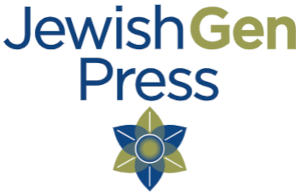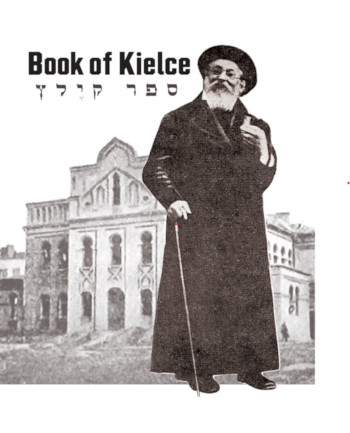

Translation of
Published by the JewishGen Press
Editor of Original Yizkor Book: Pinchas Cytron
Available from
for $36.00
Project Coordinator: Warren Blatt
Cover Design: Irv Osterer
Layout: Jonathan Wind
Name Indexing: Stefanie Holzman
Book Summary: Bruce Drake
8.5”x11” 350 Pages, Hardcover with original photographs
 |
Details:
Kielce is a town in southeast Poland sitting roughly between Warsaw in the north and Krakow to the south. It had been a holy place for Christians and until 1863 Jews had been banned from living in it by the Bishop of Krakow. But once Jews began settling in the city and their numbers grew, they transformed its character and built it into an economic powerhouse. This book chronicles the rise of the Jewish community and, later, the suffering brought about by deep antisemitism among many Poles.
Once Jews were permitted to reside there, their numbers increased from a population of 992 in 1870, to 6,137 by 1897 (representing 30.2% of the city's population) and 15,530 in 1921 (37.6% of the city's total population).
The Jews recognized that Kielce was surrounded by vast untouched natural resources and began to extract the treasures hidden in their midst. They set up great kilns for burning the limestone into whitewash, for firing bricks. They established sawmills. Next to the forests, tanneries were set up to work leather.
Kielce's former village-like atmosphere changed dramatically. The trees, fruit trees and ornamental trees that characterized its small village-like atmosphere disappeared, and in their place two- and three-story stone houses were built, in which shops were opened with display windows. Once immersed in the holy waters of Catholicism, it became a secular, commercial and industrial city.
The Poles looked unfavorably upon the economic status that the Jews acquired and their resentment boiled over into a virulent antisemitism after the first World War. It reached a fever pitch when Poland regained its independence in 1918 and, in that year, Jews were victims of a fierce pogrom. A period of great suffering began during which physical beatings and destruction of property were everyday events. The book details the Pogrom of 1918 at length as well as the dark times, Jews realized were still in store.
The outbreak of World War II brought the arrival of the Nazis in September 1939. A ghetto was established where hunger, crowding, disease and epidemics took their toll. Those who had not already died from conditions in the ghetto or were murdered by the Germans were shipped to concentration camps.
Some 200 Jews returned to Kielce – once the home to a community of about 25,000 -- after the liberation. But the entrenched antisemitism in Poland again made itself felt when it gave rise to the Pogrom of 1946, an outbreak of violence in which 42 Jews were killed and more than 40 wounded. The ruthlessness of the murders put an end to the hopes of many Jews that they would be able to resettle in Poland and precipitated a mass exodus of Polish Jewry.
The book delivers this epitaph: “And thus Kielce was emptied entirely of its Jewish inhabitants. The Kielce anti-Semites had their wish…”
May this book serve as a memorial to those who lived, worked and dreamed in Kielce.
Alternate names for the town are: Kielce [Pol], Keltz [Yid], Kel'tse [Rus], Kelts, Kilts, Kiltz, Kel'tsy
|
 JewishGen Press
JewishGen Press
 JewishGen Home Page
JewishGen Home Page
Copyright © 1999-2025 by JewishGen, Inc.
Updated 20 Aug 2024 by LA